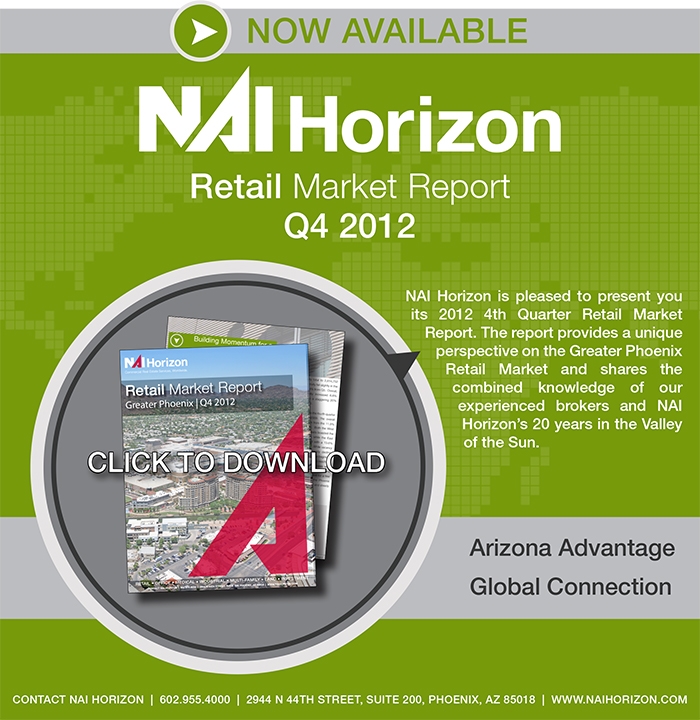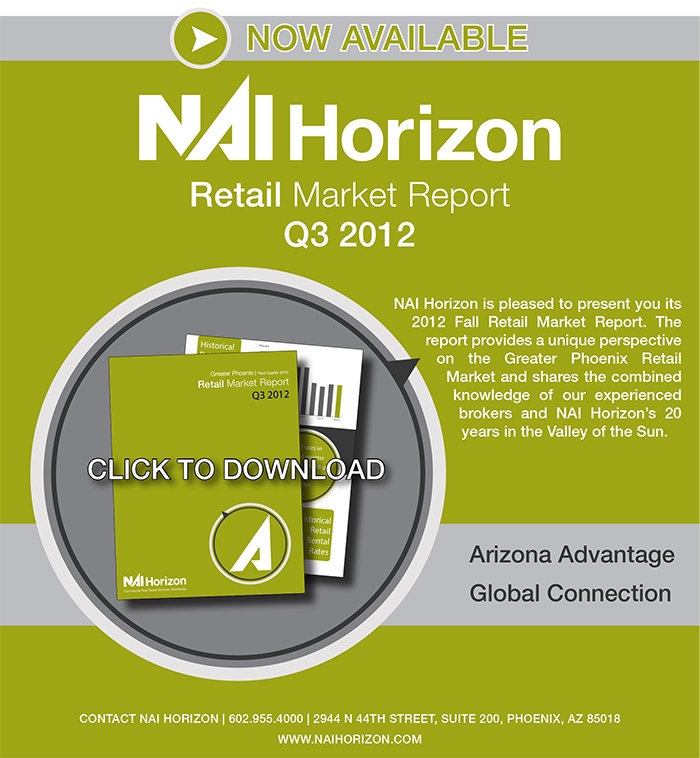Despite a sluggish start to the new year, the Phoenix retail sector continues to post strong numbers as it waves goodbye to the lowest points of the recession. With vacancy dropping and net absorption continuing to post positive figures, the market is making up ground. New retailers moving into the market place show the increased interest in the Phoenix market. The Portillo Restaurant Group, an Illinois based quick service restaurant that brings with it a large following, opened a location in Scottsdale and have a second location slated for Tempe Marketplace. Conn’s Home Plus, a home electronics and furnishing chain originally from Texas, recently opened a location in Tucson and has plans for two Phoenix locations opening this summer including one in Arizona Mills.
Vacancy continued to decline in the retail sector, dropping to 11.0% in the first quarter of 2013, down a full percentage point year over year when the vacancy rate sat at 12% in Q1 of 2012. Retail sales volume also reflected the buzz of increase in the local retail market; Q1 of 2013 totaled an impressive $109 million. This is up considerably from the $67 million posted in Q1 of last year, and is the largest sales volume seen in the first quarter since 2008. Average rental rates, while down slightly this quarter to $14.29, also seem to be leveling out from the rapid declines seen during the recession, which could be part of the overall market correction being felt in the retail market.
Net absorption fell this quarter to 484,073 SF of space absorbed, down significantly from the impressive 2012 year end of over 1.5 million SF. While dips in absorption numbers during the first quarter are common place as the market rebounds from the increase during the holiday season, Q1 of 2012 posted significantly higher SF of space absorbed at 762,725 SF. Leasing activity also lagged during the first quarter of 2013; total deals fell to 437 in contrast to Q1 of 2012 when 607 deals were completed, and square footage leased totaled just over 1.2 million down from almost 2 million in the final quarter of 2012. While leasing has seen a slight lull this quarter, the market seems to be stabilizing overall, steadying the frenzy to new space seen during 2012.
Over 200,000 SF of space remains under construction this quarter in addition to the 147,751 SF of new space delivered so far this year. The top lease transactions of the quarter included a 26,115 SF lease to Arizona Humane Society at 4240 W Camelback Rd, a 25,740 SF lease to Goodwill at 860 E Warner Rd, and a 25,261 SF lease to Sprouts at 6760 W Deer Valley Rd. The top sales transactions so far this year include a $7.6 million 14,820 SF space in Vistancia Marketplace at 28516 N El Mirage Rd in Peoria, occupied by Walgreens, and the $6 million sale of 1661 S Alma School Rd, a 120,026 SF space currently occupied by Roomstore Furniture.



